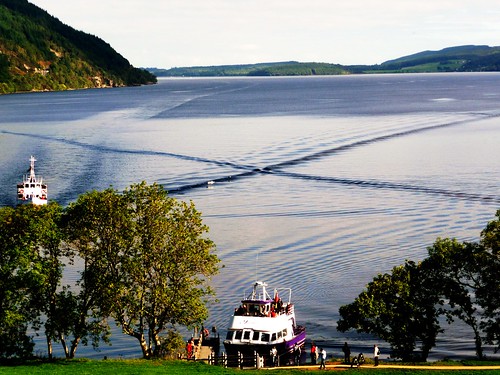New Take on Loch Ness Monster Story
Today's Times newspaper and other media outlets carry a report from scientists at the University of Otago, New Zealand (opposite end of the globe to Loch Ness) to effect that the 'monster' may be an oversized eel, possibly stretching between 2 metres (6.5 feet) and 9 metres (30 feet) in length which apparently, is quite plausible for such deep water.Scientists have found eel DNA at all locations sampled in/on Loch Ness
Monster speculation aside, Loch Ness is a pleasant enough place for visitors with Castle Urquhart offering the best vantage point for views of the Loch.
Castle Urquhart
Some other interesting facts concerning Loch Ness:
- Contains freshwater.
- 23 miles (37km) long and 230m (754 ft) deep, the second deepest in Scotland and U.K.
- Via the Caledonian Canal is one of a series on interconnected waterways in the Great Glen.
- At the northern end is Inverness whilst Fort Augustus sits at the southern tip.
View north from Castle Urquhart
Southern end of Loch Ness, at Fort Augustus





Comments
Post a Comment